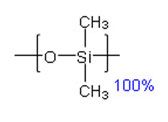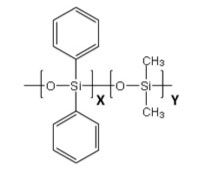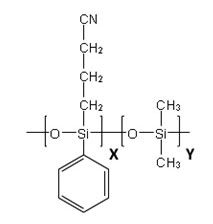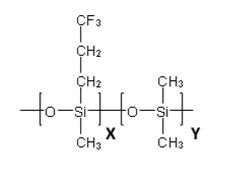The LCGC Blog: Chromatography Technical Tips - Pragmatic GC Column Selection Principles
Tony Taylor provides insight on the best way to choose GC columns based on analyte or sample characteristics.
I’m often asked about the best way to choose GC columns based on analyte or sample characteristics. The full response is of course a very broad topic, and one which is beyond the scope of this short article. However, during a recent consulting exercise I was required to give a very quick summary of the guiding principles behind GC column selection in order to get some results fast. So, I answered the question in the most pragmatic way I could, using the rules of thumb, which I have developed over the past 27 years working with Gas Chromatography. A summary of the response is shared below, I hope it acts as a primer or reminder the next time you need to make a GC column selection decisions on the fly.
In terms of selecting an appropriate stationary phase, there are four primary analyte / stationary phase interactions which need to be considered:
Dispersive interactions (<<1 kJ/mol) - lower energy (Van der Waals) forces between non-polar moieties of the analyte molecule i.e C-H bonds etc.). These will be in play when using any silica based stationary phase as the majority of the phase polymeric backbone (polydimethylsiloxane (PDMS) is non-polar in nature.
Dipole-dipole and dipole-induced dipole interactions (3 and 1 kJ/mol respectively) - are in play whenever unsaturated, aromatic or more polar functional group (i.e. C-Cl or C-N bonds) are present in the stationary phase or analyte molecule. Stationary phases containing phenyl, cyano or trifluoro functional groups are more polar than PDMS and the more of these functional groups there are, the greater their influence on the separation. For example, consider the increase in retention of aromatic compounds and the relative decrease in retention of aliphatic analytes when moving from a 5% phenylmethyl PDMS phase to a 50% phenylmethyl PDMS phase.
Hydrogen bonding interactions (19 kJ/mol) - are the strongest intermolecular forces in capillary GC and occur whenever the stationary phase contains cyano, trifluoro or (most especially) hydroxyl functional groups. This type of force is in play when analysing alcohols using a polyethylene glycol or ‘wax’ type phase.
The various stationary phases and their interactions are shown in Figure 1.


100% Dimethylpolysiloxane
Primary Interactions: Dispersive
Diphenyl Dimethylpolysiloxane
Primary Interactions: Dispersive / Induced Dipole


Cyanopropylphenyl Dimethylpolysiloxane
Primary Interactions: Dispersive / Dipole Hydrogen bonding
Trifluoropropyl Dimethylpolysiloxane
Primary Interactions: Dispersive / Dipole Hydrogen bonding

Polyethylene Glycol (PEG) or Wax
Primary Interactions: Dispersive / Dipole
Hydrogen bonding
Pragmatic phase selection rules can be summarised as:
So that just leaves the physical aspects of GC column selection – namely, length, internal diameter and film thickness. Again, the following information is a gross oversimplification, but rules of thumb are great when you in in the middle of the lab and only have your thumbs for reference……
Column length affects the separation efficiency and therefore the resolution. Doubling column length doubles efficiency (number of theoretical plates (N)), doubles analysis time in isothermal separations (1.5 – 1.75x increase if using gradient temperature programming), doubles column cost and increases resolution by a factor of 1.4. Increasing column length is the worst way to improve the resolution of a separation – however, when you have a sample with many components (100’s) you sometimes need a long column. Rule of thumb – select column length according to the number of species which need to be separated in the sample. Two components - 10m column, hundreds of components - 60m or 120m column.
Column internal diameter affects retention and efficiency. Halve the column internal diameter, double the efficiency and increase resolution by a factor of 1.4. This will double retention time only in isothermal separations and only if the film thickness in not altered. The phase ratio (β) is the column radius (µm) divided by 2 x the film thickness (µm). Keep this constant between columns and the retention time will be approximately constant. Use smaller internal diameter columns when the separation is dependent upon the stationary phase selectivity, i.e. when sample components are very similar or when multiple components need to separated in shorter timeframes. Note that the required column head pressure to achieve a specific carrier flow will increase and the column capacity will decrease as the column internal diameter is reduced (use Table 1 as a guide)
Table 1: Relationship between GC column internal diameter, column capacity (per component)
and illustrative column head pressure required to obtain a carrier flow of 1 mL/min.
Use phase ratios <100 for highly volatile (low M.Wt. analytes). Use phase ratios >400 for high molecular weight analytes or for trace analysis.
Film thickness effects retention of analyte species, interaction with the silica tubing (peak shape effects) phase bleed and column capacity. Doubling film thickness doubles retention time for isothermal analysis and increases retention by a factor of around 1.5 for temperature programmed analysis. Doubling film thickness increases elution temperature by around 20oC. Use thin films (0.1 - 0.25µm) when increased signal to noise ratio is required or when analytes are relatively involatile. Use thicker films (1 – 5µm) when dealing with volatile analytes, analytes at high concentration or when peak shape is poor. Note that increasing film thickness may compromise resolution for later eluting analytes (k>5) and that phase bleed and column capacity increase with increasing film thickness. Column upper temperature limits decrease with increasing film thickness.
For more information – contact either
Bev (bev@crawfordscientific.com) or Colin (colin@crawfordscientific.com).
For more tutorials on LC, GC, or MS, or to try a free LC or GC troubleshooting tool, please visit www.chromacademy.com
Related content:New Chromatography Columns and Accessories at Pittcon 2013 Part II
Study Examines Impact of Zwitterionic Liquid Structures on Volatile Carboxylic Acid Separation in GC
March 28th 2025Iowa State University researchers evaluated imidazolium-based ZILs with sulfonate and triflimide anions to understand the influence of ZILs’ chemical structures on polar analyte separation.
Quantifying Microplastics in Meconium Samples Using Pyrolysis–GC-MS
March 26th 2025Using pyrolysis-gas chromatography and mass spectrometry, scientists from Fudan University and the Putuo District Center for Disease Control and Prevention detected and quantified microplastics in newborn stool samples.






